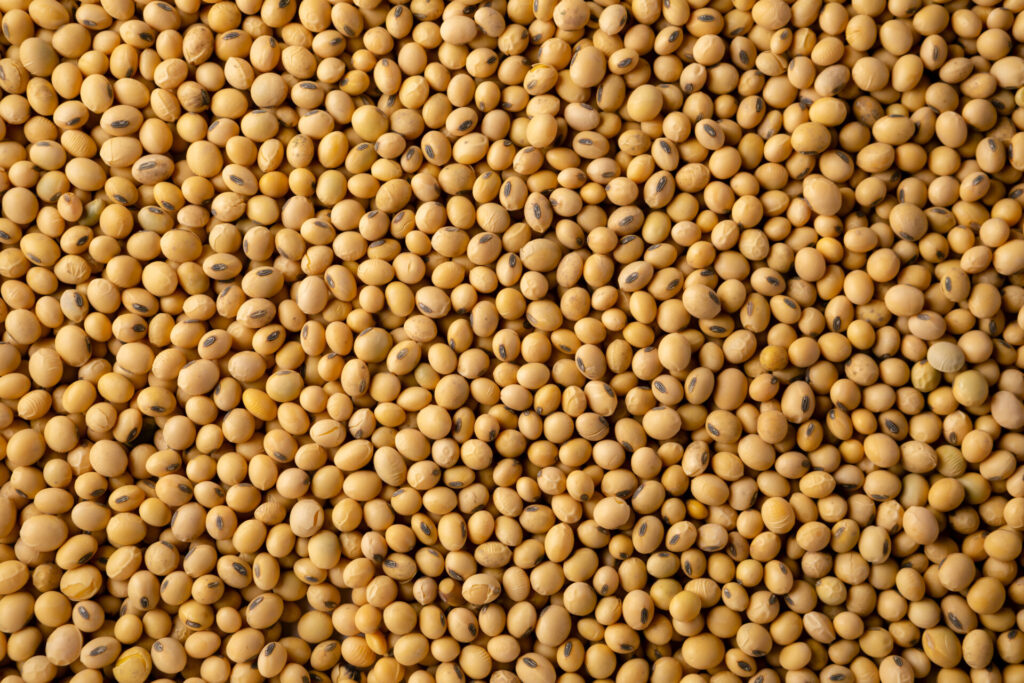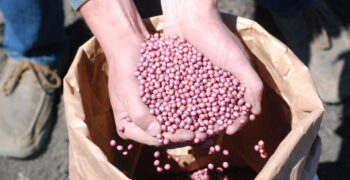By Champion Seed Soybean Product Manager, Rob Thomas
Go to most any soybean field entrance and there’s a good chance you’ll find a single soybean plant that’s just loaded with pods. It’s all by itself because all the soybean plants around it have been trampled by equipment traffic throughout the growing season. What’s happening is that soybean plant is compensating, branching out and filling the extra space it’s been given.
Now think about disease-prone areas in the field. Maybe there were areas that were stunted from iron deficiency chlorosis or there’s spots that don’t drain well and soybeans often damp off. Most likely there weren’t any soybean plants compensating for the bad ones in those areas. So often we see 70, 80 or 90 bu/a beans in the good parts of the field and then 20 bu/a in the bad areas, leaving you with a 50 bu/a field average. But what if half of those soybeans had thrived in those disease-prone areas and compensated for those that struggled? Let’s dive into that idea.
Blends are the best of two worlds
Many different factors can lower your average soybean yield. Thankfully, some of those problems can be reduced or controlled by selecting the right product for those acres — one that has good tolerance to the yield-limiting factors there. But if you select a product based on that yield limiter, will you limit the top-end potential in the best parts of the field? Our answer is the soybean blend.
In order to raise your average soybean yield, we play on the soybean plant’s ability to compensate. We select two very different soybean varieties with agronomic attributes that complement each other. Then we blend them together at our own soybean conditioning facility. Blending complementary products protects you from the floor. In areas where one variety may be weak, the other is strong … and they COMPENSATE for each other.
Proof is in the test plots
Every year, we test our blends against their individual components in multiple locations. Averaging the results from multiple unique testing locations tells us if we can expect the same results in your variable fields. Time and time again, the results show that our blends have a higher overall test average than either of the individual varieties that we pull components from when making them. Proof is already starting to show up in the ultra-early results from our new 224E Blend in 2023 strip plots.
|
Product |
Yield | No. of Reps | Diff. |
| 224E Blend |
68.14 |
2 |
3.51 |
|
2.0 component |
64.63 |
||
| Product |
Yield |
No. of Reps |
Diff. |
|
224E Blend |
71.03 | 3 |
6.91 |
| 2.2 component |
64.12 |
In addition, all but one of our Enlist Soybean blend offerings for 2024 will have two sources of resistance for soybean cyst nematode, PI88.788 and Peking. Those Peking/PI88.788 products are 204E, 224E, 253E, 294E and 324E. We also offer XtendFlex Soybean blends at the 2.1 and 3.3 maturities.
For Champion Seed, soybean blends have become our best-selling products at every maturity. What’s even better? We don’t charge our customers any extra for them! Take a look at our soybean lineup.



